Just in time for 2023, here are our editors' picks for the 10 best LGBTQ+ hot spots to visit in in the U.S. Join us in counting down to number one.
10. Illinois

Cahokia Mounds State Historic Site
NATALLIA RASADKA/GETTY IMAGES
Chicago is often viewed as the first true American city, having risen in size and importance at an astronomical pace during the 19th century, the result of its location at the hub of rail lines crossing the developing country. Not even the Great Fire of 1871 could slow its growth.
Thankfully, the city also benefited from wealthy philanthropists and visionaries, and now is home to some of the world’s best museums. The Field Museum of Natural History is one of the largest of its kind and houses enormous dinosaur fossils. The Art Institute of Chicago’s collection is extensive and includes classics like Grant Wood’s “American Gothic” and Edward Hopper’s “Nighthawks.”
Folks looking for family will find it in the Northalsted neighborhood (still known as Boystown to locals) and Andersonville. Northalsted has hosted the annual Pride celebration since 1971, only taking a break during the global slowdown. The gayborhood is home to the Legacy Walk, America’s first outdoor LGBTQ+ museum. Andersonville has been dubbed the coolest neighborhood in the country, and it would be hard not to agree. From fine dining to kink to the feminist Women & Children First independent bookstore and Swedish American Museum, Andersonville oozes cool.
Once outside of the city, Illinois opens its small-town charm and natural beauty to the intrepid traveler.
Just south of Chicago in Wilmette is the Bahá’í House of Worship, the largest temple of its faith ever constructed. Because of delays caused by the Great Depression and World War II, the temple took over 40 years to complete. The ornate dome has a stunning architectural design and is open daily to all for contemplation, prayer, and meditation.
In the northwest corner of the state is the charming town of Galena, famed for its well-preserved examples of 19th-century architecture and the 18th U.S. president Ulysses S. Grant, who worked in his father’s tannery before fighting in the Civil War. There’s a small museum in his honor, as well as the house the city gave him for his efforts in the war. Many believe that the quaint, historic downtown area of Galena is also one of the most haunted places in the country.
Springfield, the state’s capital, is hometown to one of our rumored-queer presidents, Abraham Lincoln. Visit the museum in his honor and stop at his tomb. After criminals attempted to steal the late president’s remains and hold them for ransom, the family later decided to bury him under 10 feet of concrete.
Just east of St. Louis is Cahokia Mounds State Historic Site, featuring the largest pre-Columbian era city in North America outside of Mexico. Construction on the mounds began by hand in the 9th century C.E. and continued over the next few centuries, resulting in massive structures with broad plateaus. Monks Mound, the tallest in the park, tops out at 10 stories tall.
Farther south, the natural beauty of Shawnee National Forest and the Garden of the Gods calls adventurers. The area is amongst the most scenic in the state, and a moderately difficult 6.3-mile-loop trail provides great hiking, birding, and backpacking opportunities.
9. Louisiana

STEVENS FREMONT/GETTY IMAGES
Louisiana is home to one of the gayest cities on the planet in New Orleans. The city itself has a rich 300-year history but the state’s Indigenous communities go back far longer. New Orleans is a melting pot and is heavily shaped by the BIPOC who gave the city its jazz music, creole food, and air of vibrancy.
The city has events taking place throughout the year that will appeal to just about every type of LGBTQ+ visitor, including Pride, Southern Decadence, Gay Easter, Halloween New Orleans, and, of course, Mardi Gras. But there’s also the festival season which includes the French Quarter Fest and food festivals for po’ boys and even fried chicken.
New Orleans is a haven for the South’s burgeoning artists and creatives, especially in the queer community. Peruse the galleries in the French Quarter and check out the local artists that gather at Jackson Square. If you’re lucky, you might find yourself at a pop-up in the Marigny & Bywater neighborhoods.
Gay playwright Tennessee Williams lived in the French Quarter and made the city the setting of plays like A Streetcar Named Desire and Vieux Carré. The city hosts the annual Tennessee Williams & New Orleans Literary Festival and the Saints & Sinners LGBTQ+ Literary Festival each March.
The architecture of the city is worth a day devoted to exploring. Whether you’re strolling the blocks of the French Quarter, riding the streetcar up St. Charles through the Garden District and Uptown with its large Southern pre-Civil War era mansions, or the colorful shotguns of the Marigny & Bywater, NOLA is an architectural feast for the eyes and will make you feel like you’ve stepped into another country (or countries).
No discussion of New Orleans is complete without mentioning the food. Simply put, the food in New Orleans may be the best in the country, and eating your way through the city is a great way to explore its cultural heritage. Make a reservation for lunch at the Commanders Place for some gussied-up po’ boys and 25-cent martinis, or stop by Willie Mae’s Scotch House for its famous fried chicken.
Those venturing outside of New Orleans into the surrounding deeply-red countryside will pass beautiful wetlands on their way to the capital of Baton Rouge. This thriving college town is generally filled with more progressive students from the local Louisiana State University and has several gay bars. Visit the low-key George’s Place for trivia contests and to catch a Tigers football game or hit up Splash Nightclub for drag shows and parties.
Regardless of where you visit in Louisiana, perhaps its best selling point is its famed Southern hospitality. I always say if you can get someone to visit here for the first time, the people here will do the rest. The first time I hear someone, even a complete stranger, callout “Hey, my baby,” I know I’m back home in Louisiana.
8. Oregon

ORDAN SIEMENS/GETTY IMAGES
There are so many reasons to love Oregon, including that this home to so many lesbians is nicknamed the Beaver State. Here’s why it’s great for LGBTQ+ folks and adventurers of every stripe.
The Oregon Zoo in Portland has well-treated and loved animals, delicious food, and fun events, especially Zoo Lights in winter and Zoo Concerts in the summer.
Another fun family event is going to a Portland Thorns game. The National Women’s Soccer League 2022 Champions play at Providence Park. The team has several lesbian players and the matches are very LGBTQ-welcoming. Even the Portland Thorns’ scarfs are rainbow.
Eugene, Oregon, hosts pre-Olympic trials for track and field. The U.S. Track & Field Championships are precursors to every summer Olympic Games. The World Athletics Championships were also held in Eugene in 2022, the first time an American city hosted the event. A great way to get tickets is to volunteer.
Theater lovers flock to the state every year. Ashland, Oregon, is a sports fan town where the sport is Shakespeare. Oregon Shakespeare Festival performances run from March to October in venues around the festival campus, including an outdoor space reminiscent of the Globe in England. OSF is also known for premiering plays not by the Bard. In 2022, the first Black woman artistic director, Nataki Garrett, was elected.
Ashland isn’t the only place to catch the action. In Portland, the Original Practice Shakespeare Festival (OPS Fest) is the queerest Shakespeare company west of the Mississippi. Gender-neutral casting is a hallmark. OPS offers free performances in public parks during the summers.
There are endless outdoor activities and gorgeous natural features to see in Oregon. Multnomah Falls is one of the most photographed and worth more than just a side of the road stop. Take the Multnomah Falls Trail from the Columbia River Gorge National Scenic area near Bridal Veil for a 2.6-mile out-and-back trek. For more falls and a longer trek, head to Silver Falls State Park and take the gorgeous 7.4 mile Trail of Ten Falls loop.
Or visit Blue River, Oregon, and follow the McKenzie River National Recreation Trail to the beautiful turquoise waters of Tamolitch Pool. A more strenuous hike is the 3.5-mile loop Misery Ridge & River Trail near Terrebonne. Another natural wonder not to miss is Crater Lake National Park, home to the deepest lake in the U.S.
If you prefer your winter destinations a little creepier, stay at Timberline Lodge near Government Camp, Oregon. It was used for the exterior shots in Stanley Kubrick’s terrifying film The Shining. Settle your nerves with a Spanish coffee at the Ram’s Head Bar before you go skiing, snowboarding, or sledding. Or just sit by the fire and enjoy a warm drink while your friends brave the slopes.
Unique food options also abound in Oregon. Of course, Voodoo Doughnuts is a Portland institution, but some of our favorites are farther afield. South of Bend, you’ll find Bigfoot Tavern guarded by a giant Sasquatch carved out of a tree. The food is great and portions are almost big enough for Bigfoot herself.
The Cowboy Dinner Tree is perhaps the most remote restaurant in Oregon, near Silver Lake. You have to call ahead and order your entrée: a 30-ounce sirloin steak or an entire roast chicken. There are a few cabins to rent on-site if you can’t make it home.
If you want really fresh or old-style smoked salmon, stop under the “Bridge of the Gods” up the Columbia River Gorge on Interstate 84. Native American families who have fished the Columbia River for centuries sell some of what they catch.
Visit the wreck of the Peter Iredale near Fort Stevens in Warrenton, Oregon during low tide and you can explore the ship’s remains. It ran aground in 1906, enroute to the Columbia River.
Evergreen Aviation & Space Museum in McMinnville houses the Spruce Goose, a wooden airship built by eccentric billionaire Howard Hughes. The largest airplane of its kind ever built, it flew for an hour and then never again.
7. Georgia

DANIELA DUNCAN/GETTY IMAGES
You can’t truly understand the Civil Rights movement in America until you’ve been to Georgia. Don’t let the fact that the state is in the Bible Belt dissuade you from seeing the beautiful, vibrant, and richly diverse cities of Atlanta, Savanah, and Athens. The LGBTQ+ folks in those blue bubbles need your money to keep fighting the good fight and you’ll find that Georgia is also one of the safest and most queer welcoming of the Southern states (especially for Black LGBTQ+ folks).
Savannah is rooted in queer acceptance, according to José Harvey, the founder of the travel blog My Normal Gay Life. So while there are no gayborhoods, he says the “city is so accepting of LGBTQIA+ people that residents and visitors can visit any bar without fear of reprisal.” If you recall in the 1990s, Midnight in the Garden of Good and Evil, a major studio film directed by Clint Eastwood, featured a trans woman playing a trans woman (the legendary Lady Chablis), and in 1994 the city’s female mayor declared it a safe haven for gays and lesbians. Chablis passed away in 2006, but her spirit lives on in this friendly Southern gothic seaside town. There’s an LGBTQ+ community center, historic neighborhoods, amazing architecture, and some areas most visitors have never seen (Tybee Island is a must). The Moon River District, 20 minutes south of downtown, is where you can kayak around barrier islands, discover Gullah-Geechee culture, and drive the gorgeous tree-lined path up to Wormsloe Historic site (a former plantation created on the backs of enslaved Black and Indigenous people). The Pin Point Heritage Museum is where a local guide will explain the Gullah-Geechee culture that has survived off the coast of Savannah.
Athens, about 70 miles north of Atlanta, is a typical college town (i.e., more liberal, younger) but with one exception: a fantastic, queer-friendly music scene. While the Indigo Girls came out of nearby Decatur, Georgia, both the B52s and Michael Stipe of REM were born in Athens. There’s been a public push for gay rights since two students started a group in 1971. And there are a ton of events like the weekly Showgirl Cabaret and the annual Boyxxx fundraiser for HIV. LGBTQ-owned and -friendly restaurants abound (get brunch at Mama’s Boy, one of the South’s best biscuit joints) or Creature Comforts (part of the Athens Beer Trail).
Atlanta has often been dubbed the LGBTQ+ capital of the South, and it has the receipts to prove it: endless queer events, entertainment, festivals, bars, restaurants, and parties. Visit Martin Luther King Jr. National Historic Park, King’s childhood home, the historic sites where he led demonstrations, and Ebenezer Baptist Church where he preached. The National Center for Civil and Human Rights is an emotive museum with powerful immersive exhibits that let you stand in the shoes of the protestors (at demonstrations like the Lunch Counter Sit-In). Images of the Freedom Riders show the vast diversity of those fighting for civil rights. Discover Atlanta offers self-directed tours exploring the city’s rich progressive history. There’s also the Jimmy Carter Presidential Library and Museum and the Trap Music Museum, both worth visiting.
Atlanta has several gayborhoods, including Midtown where you’ll find an entire queer world and Downtown (which is touristy but becoming a hotspot). Plenty of LGBTQ-owned restaurants and boutiques can be found in both Cabbagetown and Grant Park while Ansley Square shopping center has been called a virtual gay courtyard because of all the gay bars and stores.
Sunday brunch with the queens at Traffik is a must. Go all-in with the chicken and waffles with honey butter and bottomless mimosas.
In East Atlanta, you’ll find Mary’s and My Sisters Room, one of last lesbian bars left in the U.S; it’s been an Atlanta staple since the 1990s and is gay/bi/trans-friendly. The all-Black Monday-night drag show NeonBLK at gay bar Mary’s often boasts Drag Race contestants and other legendary global drag stars.
There’s also an amazing ball scene in Atlanta, where you’ll find the House of Balenciaga among others. A great entry is visiting the LSS Popup Ball (which is hosted by the legendary Norman Ebony with Paris Da on the mic). This weekly event is the closest many folks will get to the worlds seen on Pose and there’s an open to all categories if you want to strut your stuff.
6. Florida

CLIFF HAWKINS/GETTY IMAGES
While Florida is regularly in the news for anti-LGBTQ+ legislation, the state is still a playground for queer folks. That’s because one of the most politically conservative states in the country is home to some of the gayest cities.
Miami is considered a queer mecca and has boasted a gay nightlife scene since the 1930s, currently attracting over a million LGBTQ+ visitors a year. The city holds multiple Pride festivals and the main one, hosted in Miami Beach, is a week long. It will be bigger than usual in 2023 as it marks its 15th anniversary. Other great local Prides are held in Wynwood and Little Havana, which is the home of the largest Latinx LGBTQ+ festival in the U.S.
Miami also features some of the best drag performers in the country. Your visit won’t be complete without stopping at Palace South Beach. If you haven’t seen their TikTok videos already, it’s become a go-to spot for good food, muscular servers, and jaw-dropping drag stunts. R House in Wynwood also hosts an electric drag brunch, where visitors are treated to bottomless mimosas and a drag show that will have you screaming (and tipping) for over an hour straight, I mean, an hour gay.
Of course, southern Florida’s beaches are always a must. In Miami you’ll find 12th Street Beach lined with Pride flags and beautiful people. Haulover Beach is clothing-optional and locals and tourists alike gather to have fun in the sun.
Miami nightlife is next level. Check out Azucar, Twist, and Palace, but be sure to keep tabs on your phone and wallet. And don’t be afraid to ask the locals where the latest party is, they’re usually happy to show you the way.
Just over an hour north of Miami lies Fort Lauderdale, a smaller city but one of Florida’s most LGBTQ-friendly. According to stats on same-sex marriage compiled by the Williams Institute, Wilton Manors comes second to only Provincetown, Massachusetts, for its percentage of queer couples. In midsized cities, Fort Lauderdale blew away its nearest-competition of Berkeley, California, for its percentage of same-sex couples. So naturally, the region boasts a wide range of LGBTQ+ bars, Pride festival, and attractions. Whether you’re staying at an exclusively gay resort or frolicking amongst the straights, you’re sure to have a good time. Make a point to soak up the sun at Sebastian Street Beach, one of the best (and gayest) beaches in the state.
Then there’s Key West, a small island on the straits of Florida. The city is very LGBTQ-inclusive with plenty of gay bars, LGBTQ-owned restaurants, and queer-themed adventures. It’s even home to a gay beach nicknamed after Liz Taylor (at the Fort Zachary Taylor State Historic Park). If you’re out at the bars, be sure to stop by the four rainbow crosswalks at the intersection of Duval and Petonia.
There are plenty of landmarks, watersports, beaches, and even LGBTQ+ museums to explore on the island of Key West, and the city hosts great queer events like Fantasy Fest, Womenfest, and New Year’s Eve. Visiting the southernmost point of the U.S. is like going to the end of the rainbow — totally gay.
5. New York

STRKB/GETTY IMAGES
New York City is the living breathing heart of the Empire State and there’s something here for everyone. Bring your walking shoes, and stay hydrated — NYC requires stamina, especially during the hot and humid summer months. Start downtown, and fortify yourself with a cup o’ joe or tea from a local street vendor.
History buffs and Hamilton fans first stop should be the Trinity Church in the heart of the financial district. The Church has been there since New York was New Amsterdam, and is the final resting place of Alexander Hamilton and his wife, Elizabeth Schuyler Hamilton, their son Philip Hamilton, Elizabeth’s sister, Angelica Schuyler Church, and Son of Liberty, tailor, and spy, Hercules Mulligan.
Nearby check out the Charging Bull (also known as the Bull of Wall Street), a bronze sculpture by Arturo Di Modica, then stop by the National Museum of the American Indian. Take a moment of silence at the September 11 memorial, then explore the World Trade Center, or just stare at the Oculus, an architectural marvel designed by Santiago Calatrava. You’re above the subway just about anywhere in the city, so take it to Chinatown. Visit the largest Buddha in NYC as well as the largest temple, at Mahayana Buddhist Temple, then pop in to Tasty Dumpling on Mulberry Street. Save room for cappuccino and a cannoli — or any pastry — at a Ferrara’s in nearby Little Italy, the first pasticerria and espresso bar in the U.S.
Meander through SoHo and then on into The Village to visit the Stonewall National Monument. Stop by The Stonewall Inn to feel the history, enjoy the vibe, or have a drink and take in the night’s scheduled event. Wrap it up with something sweet by stopping at Big Gay Ice Cream.
Don’t miss Times Square. Stand there and soak it all in, baby, because this is the crossroads of the world. When you see the nonstop hustle and bustle that it contains every second of the daily 24, you’ll know why this is the city that never sleeps — and why you needed all that food and coffee.
The city will entertain you 365 days a year, but there’s is more to the state than the metropolis, and some of it may surprise you. In Upstate New York, visit the famous Catskills with a stay at the Lazy Meadow, owned by none other than Kate Pierson of the B52s and her wife. It’s campy, cozy, kitschy, and just plain nice, with all the suites styled in “mind-blowing mid-century modern/space age/rocket-your-socks-off decor.”
If you use this as a base, you can visit Woodstock and wander among art galleries, or hike any of the hundreds of miles of trails. Learn more about the Indigenous people of this land with a visit to the Iroqois Museum, which offers hands-on workshops and live events in addition to a permanent exhibit.
Any time of year is a good time to go visit Lake Placid, home of the 1980 Winter Olympics. You can visit the rink where the U.S. defeated Russia in a rare feel-good moment (for the U.S.) in the superpower competition, the Miracle on Ice. Then drive to the top of Whiteface and see a castle built of native stone, admire the 360 degree view, and enjoy the restaurant or stop in downtown Lake Placid for a bite and drink at Top of the Park. There’s plenty more to do: this is New York, and no matter where you go there’s always something more to see, experience, learn, or be.
4. Puerto Rico

MARTIN WHEELER/GETTY IMAGES
American mainlanders are missing out on a rich piece of our nation’s culture and history if they haven’t visited Puerto Rico. The U.S. territory is a hidden multicultural Caribbean jewel that’s as exciting as Miami and warm as Aruba. Outside of Key West, it’s the most LGBTQ-embracing island in the region, with multiple Pride festivals and more LGBTQ-owned businesses than other Caribbean islands.
Technically, Puerto Rico is an archipelago in the northeast Caribbean. The main island is what most think of when they hear Puerto Rico, but there are four smaller islands (including the gorgeous and less traveled Vieques and Culebra). Hundreds of tiny uninhabited islands also dot its azure waters, as well as reefs of coral and sand.
The weather is 80 degrees year-round and there’s always stuff to do during the wet, dry, and hurricane seasons (which peaks in September). Located between historic Old San Juan and the Condado area, the Caribe Hilton is set amid 17 acres of tropical gardens along its full beachfront, every room with an ocean view on an exclusive peninsula. The first Hilton outside the U.S. mainland, it is also San Juan’s largest. If you can, book a Condado Lagoon Villa for a treat. Elizabeth Taylor honeymooned here, and in 1954 the first Piña Colada was reportedly created at Hilton’s Beachcomber Bar. (The piña colada is the official drink of Puerto Rico and more than one bar claims they invented it.) Today, Caribar at the Hilton makes a sparkling version that’s a must-try. For a gay-owned place to rest your head, the clothing-optional Coqui del Mar Guest House is popular.
Don’t limit yourself to a resort pool because there’s so much more of Puerto Rico to explore. Culinary or rum tours of Old San Juan are fabulous introductions to the island. The city’s many neighborhoods and thriving art scene beckon, and a revealing trip through the mangroves and bay on Isla Verde is enchanting. The super hip and artsy Santucci, where you’ll find theater, opera, music, art, and queers, is another must. There you can visit the Puerto Rico Museum of Art or the Contemporary Art Museum, and appreciate the colorful murals covering buildings around Calle Cerra.
Beaches abound from secluded to cruising to crowded. Nature lovers come out at night to bioluminescent bays (a species of phytoplankton is found only here, the Virgin Islands, and The Bahamas, and it makes the ocean glow like underwater fireflies). The Puerto Mosquito Bioluminescent Bay on the island of Vieques is famous for the bioluminescence produced by the dinoflagellate Pyrodinium bahamense, which glows blue when agitated. Mosquito Bay is recognized by Guinness World Records as the planet’s brightest. A two-person moonlit kayak trek makes for a romantic, surreal, and eco-friendly experience.
Good bars and restaurants are everywhere in Puerto Rico, so it’s easy to mix it up — street corn croquettes at the Prole, beer at a gay bar like La Sombrilla Rosa (or at one of the clubs like La Cantina and El Cojo), drag shows at the Bitch Bar, or fresh-squeezed juices and live music at Esquina Watusi.
During the day, take a walking tour led by a Puerto Rican guide through La Perla. A working-class neighborhood built along a steep, colorful hillside in San Juan, La Perla was the setting for Luis Fonsi’s “Despacito” music video and home to the beautiful Santa María Magdalena de Pazzis Cemetery. La Perla began as a slaughterhouse with living quarters for its workers, the poor, and jíbaros (rural folks). Once crime-ridden, a collusion of ingenuity, microbusinesses, and tourism has changed that. Stop at La Garita for the view and the lobster mofongo and snapper ceviche. Visit the Malecón, the boardwalk along the ocean beside the Ofrenda (murals that honor the dead), and taste the moonshine from one of the drink shacks along the beach.
3. Massachusetts

DENIS TANGNEY/GETTY IMAGES
In Massachusetts the queer vacation spot — and top same-sex wedding destination —Provincetown gets all the attention. Gay parties happen almost every day in the summer and events draw tourists year-round. The flamboyant Carnival in August attracts 90,000 people, Women’s Week is in October, the 7-day transgender festival of Fantasia Fair is the oldest in the U.S., and in December the Santa run features contestants sporting little more than banana hammocks. But the first state in the U.S. to legalize same-sex marriage has more to offer LGBTQ+ travelers than P-town. Here’s what you’ll find elsewhere.
In Boston the gayest areas of town are South End and Jamaica Plains, both with plenty of queer-owned and -friendly spots. It’s not unusual for mainstream bars in Boston to host a weekly “gay night.” Our fave is Underbar, the place to go for drag and dancing. Dedicated queer spaces include Paradise Cambridge (with male go-go dancers), Club Café (a 25-year-old South End institution with dinner, dancing, drag, and cabaret), and DBar (which transforms from gastropub to nightclub). While in town take the self-guided Equality Trail walking tour that follows the route of Boston’s first Gay Pride March in 1971 or join elders for dinner at Out4Supper, the first Boston Supper Club for LGBTQ+ seniors and friends.
Located in mid-state, Northampton was famously dubbed “Lesbianville, USA” in the 1990s. Home to Smith College, the city does have a sizeable lesbian population but lots of other folks from the queer community as well. Nosh at the gay-owned Familiars Coffee & Tea, located in a train car that has been serving food since 1932. Founded in the ’70s, FitzWilly’s Restaurant & Bar is reportedly lesbian comic Kate Clinton’s favorite haunt.
Take a bike tour of Northampton or down the Norwottuck Rail Trail which links the town with neighboring Hadley, Amherst, and Belchertown. A town that enjoys more cocktail bars than dance clubs, all the bars in Northampton are LGBTQ-friendly but The Majestic Saloon is currently the only true queer bar in town. It has weekly karaoke, dirty bingo, and signature cocktails including The Cher, The Madonna, The Beyoncé, and The Judy Garland. Bishop’s Lounge has live entertainment six nights a week and a monthly gay party.
In western Massachusetts (about 2 hours from Boston) you’ll find the Berkshires, a Norman Rockwell-esque setting of farms, woodlands, and creeks. But unlike many rural areas in America, this one is decidedly queer-embracing. Hailing itself as America’s Premier Cultural Resort, the region takes their art seriously with the Massachusetts Museum of Contemporary Art in North Adams joining previously established institutions like The Clark Art Institute (which features one of the premiere collections of Impressionist works). If you prefer live performances, come for the Williamstown Theatre Festival, a Tony Award-wining regional fest that draws top actors, directors, and playwrights from across the country. Stay at the lesbian-owned Topia Inn, a luxury eco-inn with spa amenities featured in The New York Times. And take in the drag brunch at Hawks & Reed.
2. Hawaii

ED FREEMAN/GETTY IMAGES
Beckoning with beautiful beaches and rainforests, and brimming with Indigenous history and culture, Hawaii tops many travelers’ bucket lists. Now, with two volcanoes erupting simultaneously, Hawaii is also a huge draw for those who want to witness the Earth at its most dynamic. The state is also one of the most LGBTQ-inclusive in the U.S. and has a long Indigenous history of embracing gender and sexual diversity.
The state’s queer scene is concentrated on two islands, Oahu (home to Honolulu) and Hawaii (also known as the Big Island — home to Hawaii Island Pride). But Kauai offers stunning scenery and outdoor adventures while Maui has long drawn LGBTQ+ couples seeking romantic destination weddings and honeymoons.
Hotel Wailea overlooks Maui’s South Shore and hosts Pride events each October, while Garden Isle’s Sheraton Kauai Coconut Beach has a long-standing monthly drag brunch with a five-course meal. The clothing-optional, queer-friendly Little Beach, lies on Maui’s southeast.
Still, it is Oahu, and specifically Hawaii’s capital, Honolulu, that shines the brightest as a queer destination. During the day, sunbathe at one of the local Waikiki beaches, hike the rainforest outside of town, or head to the ocean for surfing or other water sports. Stop at Diamond Head Lūʻau which offers interactive, cultural activities like hula lessons, lei making, weaving, ukulele lessons, and tattooing.
Honolulu’s legendary gay nightlife spots include Bacchus Waikiki, Scarlet Honolulu, and Wang Chung’s Karaoke Bar (Chiko’s Tavern and In Between Waikīkī also feature karaoke). The monthly Freaky Friday stages drag performances and a shirts-optional gay dance. For accommodations mere steps to drag shows and male dancers, stay at Waikīkī Grand Hotel and enjoy its Hula’s Bar and Lei Stand. Otherwise consider Honolulu Pride gold-sponsor Alohilani Resort, with minimalist elegance, cultural immersion activities (lei-making, Indigenous tree-planting), and a 280,000-gallon lobby oceanarium, giving you an unrivaled view of native reef fish.
1. California

NATALLIA RASADKA/GETTY IMAGES
Wander among old growth trees in Redwood National and State Parks then take a canoe trip down the Klamath River in a hollowed-out Redwood canoe with a native Yurok guide. Enjoy the views of Emerald Bay at Lake Tahoe and help keep it blue. Climb El Capitan or simply be awe-struck by the towering granite walls of Yosemite National Park. Surf San Diego or Half Moon Bay, float the Russian River in the LGBTQ+ resort town of Guerneville. Tour wine country or eat your way through the state’s culinary diversity. Surf in the morning and ski in the afternoon. The diversity of the state’s geography also gives it an edge over other states, but so does it’s leadership when it comes to protecting LGBTQ+ rights — and that impacts everything.
Of course, San Francisco, one of the world’s queerest cities, tops many LGBTQ+ travelers’ list of places to visit. There you can learn more about the queer-rights movement at the GLBT History Museum or on Cruisin’ the Castro Walking Tours. Attend one of the city’s queer festivals throughout the year: The Native American BAAITS Two-Spirit Powwow in February is the oldest and largest in the nation. Pride Month draws a million visitors every June who watch the parade and attend events like the Fresh Meat Festival of transgender and queer performance.
Leathermen flock to the Folsom Street Fair in September, Halloween is a blowout, and November offers the oldest trans film festival in the world (SFTFF). But don’t neglect the rest of the San Francisco Bay Area, especially Oakland (our fave queer spots include Port Club, Que Rico Nightclub and Restaurant, The Queer Gym, and Chopped star Jen Biesty’s Shakewell). In the South Bay, San Jose has Splash Bar, Sara’s Southern Coffee Shop, and Queer Silicon Valley’s traveling history tour.
As the state’s largest city, it goes without saying that queer travelers to the sprawling metropolis of Los Angeles will find plenty to occupy their time. While the heart of LGBTQ+ Los Angeles beats in West Hollywood, it pulses through the entire city, particularly in the neighborhoods of Silver Lake, and Downtown (DTLA). More than a third of the residents of West Hollywood (WeHo) are queer, and the city is home to essential events like LA Pride Festival and Parade, Outfest, and the Halloween Carnival. The Abbey draws queens, trans folks, and both queer men and women (especially to GirlBar).
Silver Lake has deep roots in queer history, home to a celebrated drag performer in the 1920s, the Mattachine Society in the ’50, The Black Cat raids and following protests in the ’60s, and leather bars in the ’80s. Learn more queer history at ONE National Gay & Lesbian Archives and The June L. Mazer Lesbian Archives. Silver Lake’s Casita Del Campo has been around for six decades and features a Cal-Tex menu (delicious margaritas) and cabaret theater. In DTLA, don’t miss The New Jalisco Bar, Queen Kong Friday nights at Precinct, and dancing at the Redline. Elsewhere in the city, you’ll find Cuties, a coffee shop and community center (East Hollywood); and pop-up parties like the pansexual A Club Called Rhonda and the POC and trans-centered Ostbanhof. At Will Rogers State Beach near Santa Monica is the “unofficial” gay beach, nicknamed “Ginger Rogers Beach.”
Of course, Southern California beaches are always a draw but two beachside communities are especially LGBTQ-embracing. Laguna Beach, a historic arts colony with a long-established queer community, is Orange County’s leading LGBTQ+ destination. Further south, San Diego is a vibrant city, where the LGBTQ+ hub is the neighborhood of Hillcrest. Eat at Gossip Grill, sip craft beers at the gay-owned Hillcrest Brewing Company, and then dance the night away at The Rail, San Diego’s oldest gay bar.
Pull yourself away from the coast long enough to explore the queer desert communities centered around Palm Springs. One of the world’s top LGBTQ+ destinations, it’s home to the world’s largest gathering of queer women (Club Skirt’s Dinah Shore Weekend) and hosts the gay circuit mainstay, the Palm Springs White Party. In the spring enjoy local hiking or visit for Cathedral City LGBTQ Days (March) to watch wildly decorated, four-post beds race through the desert city’s downtown. In October celebrate Palm Springs Leather Pride, and in November the broader community Pride events. Stay at one of the region’s gay clothing-optional motels or the pink paradise of Trixie Motel, visit the local LGBTQ+ center, sip java at Koffi, enjoy drag brunch at Oscar’s Downtown Palm Springs, and party at Chill Bar or Hunters Palm Springs.
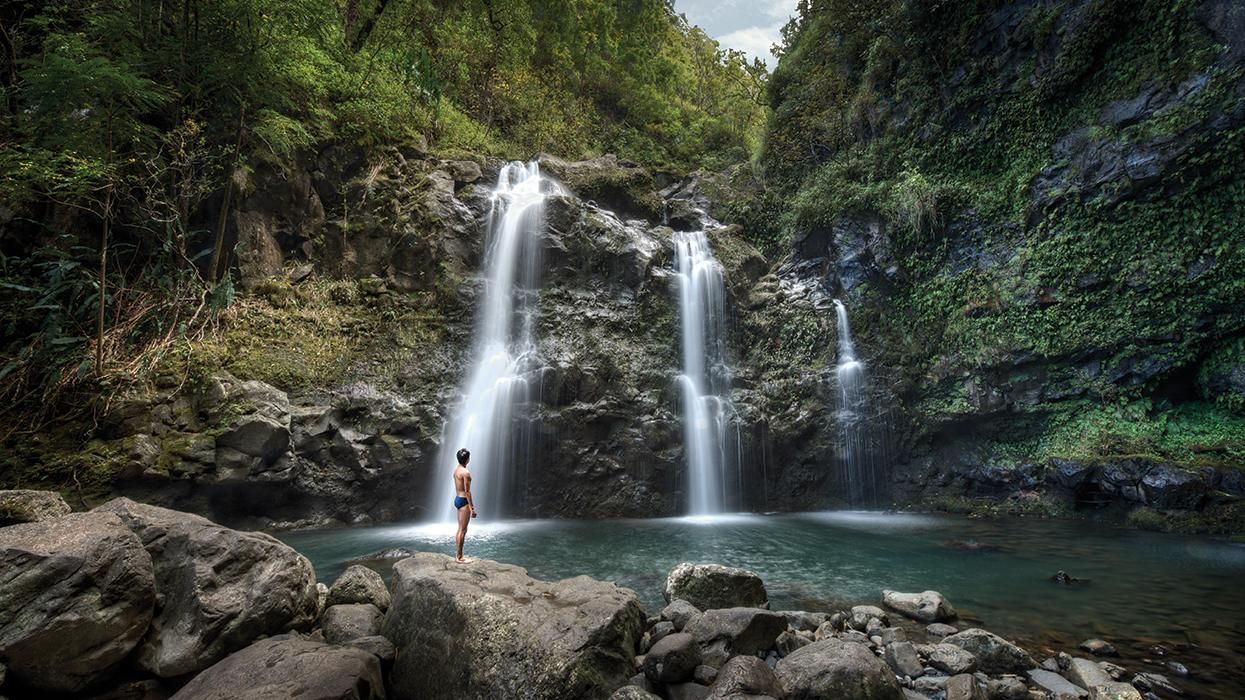


























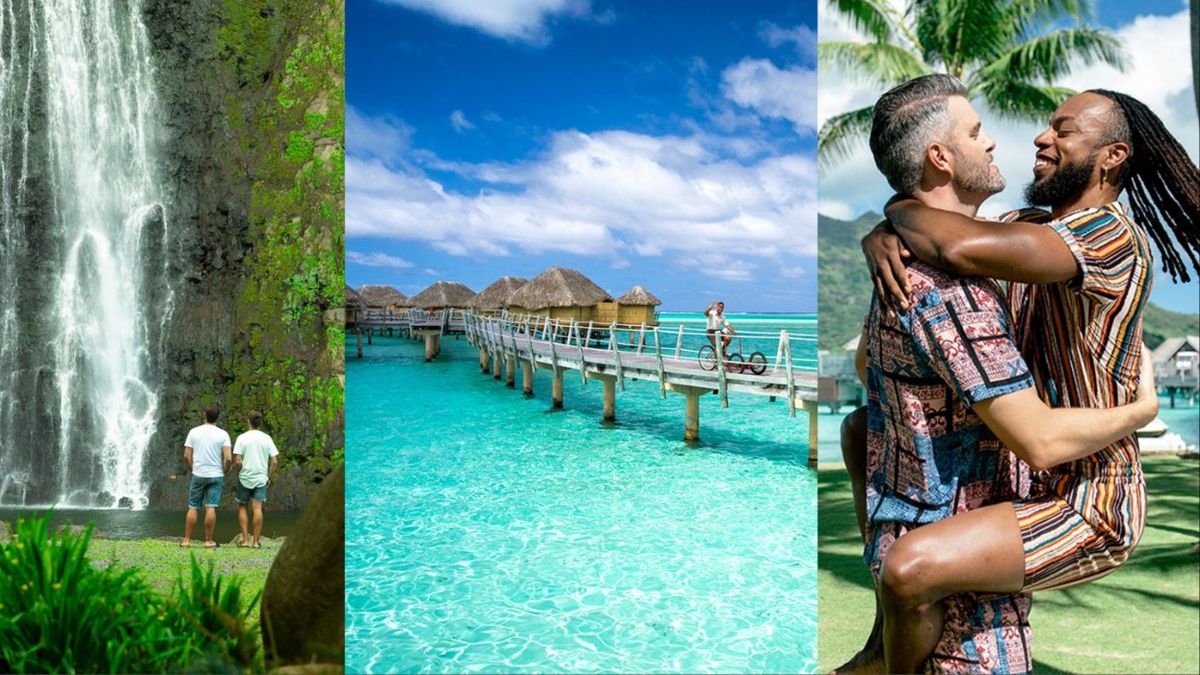


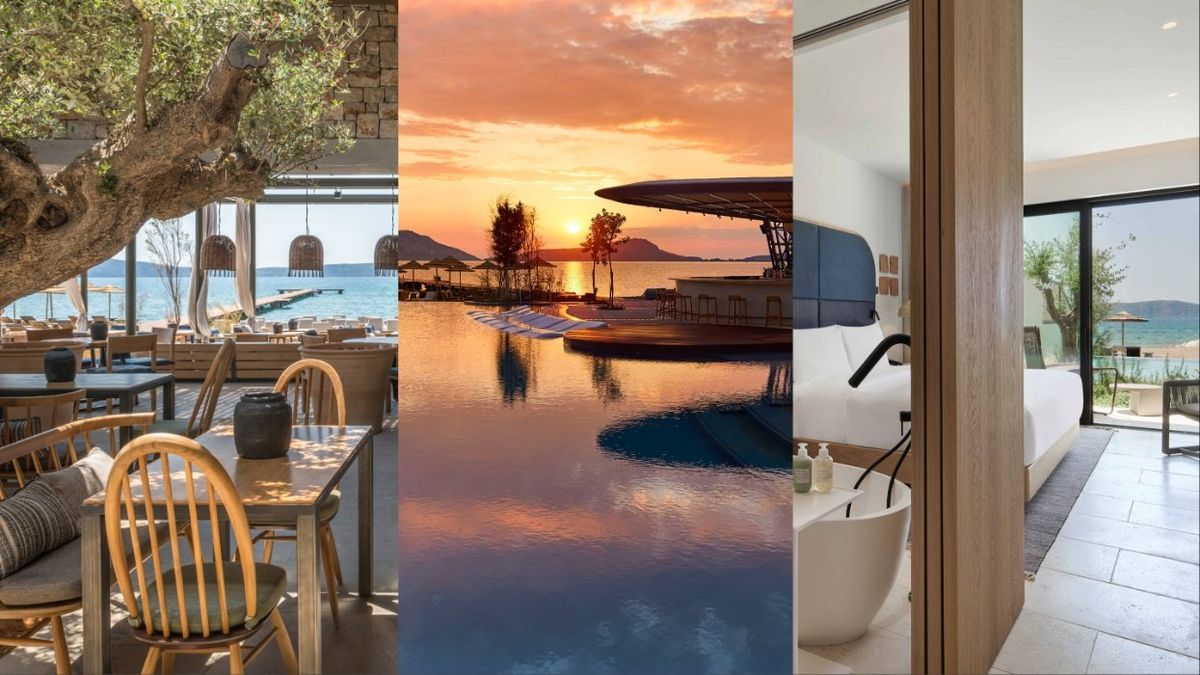



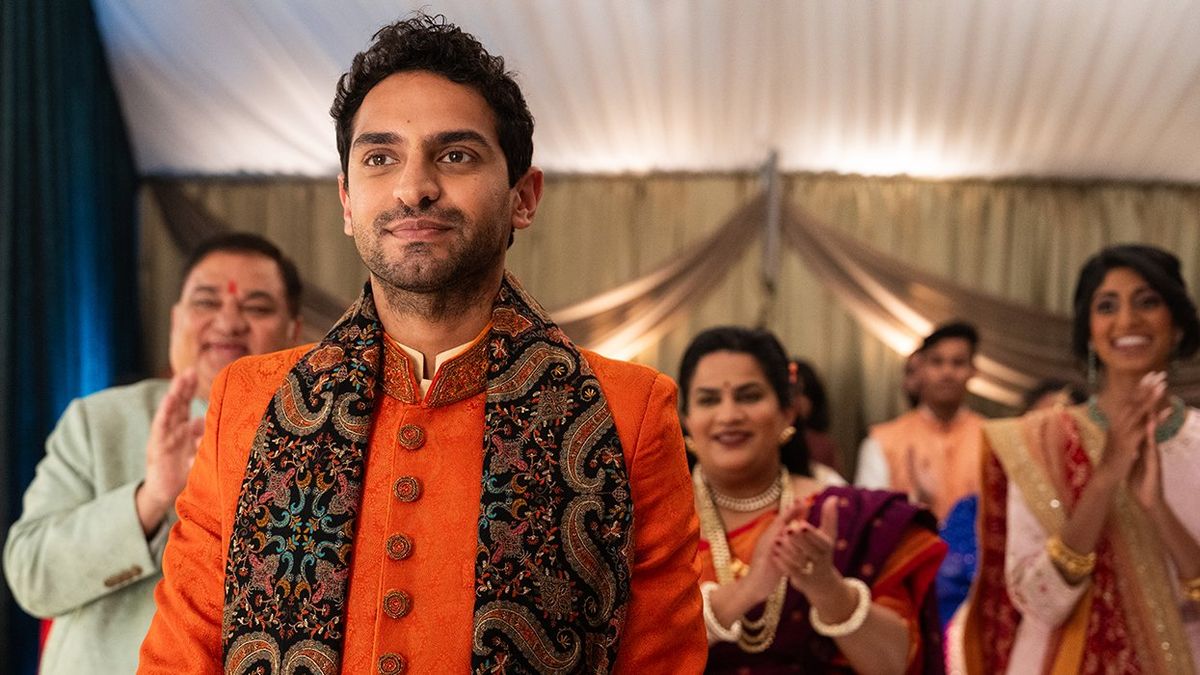
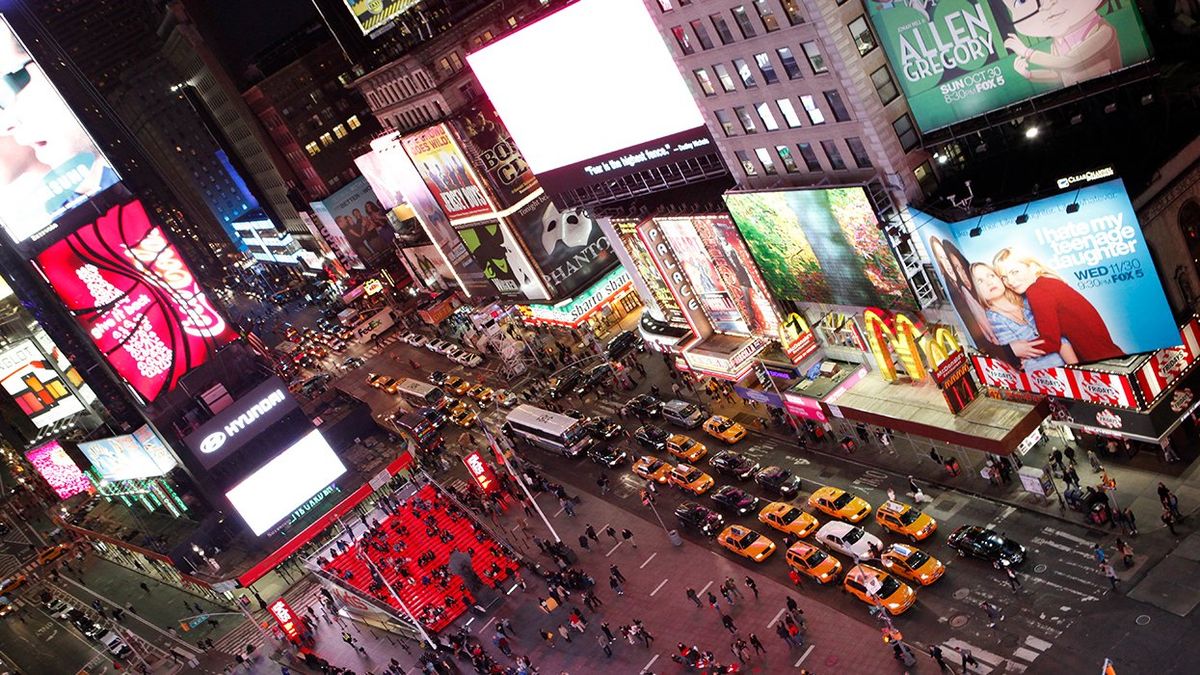
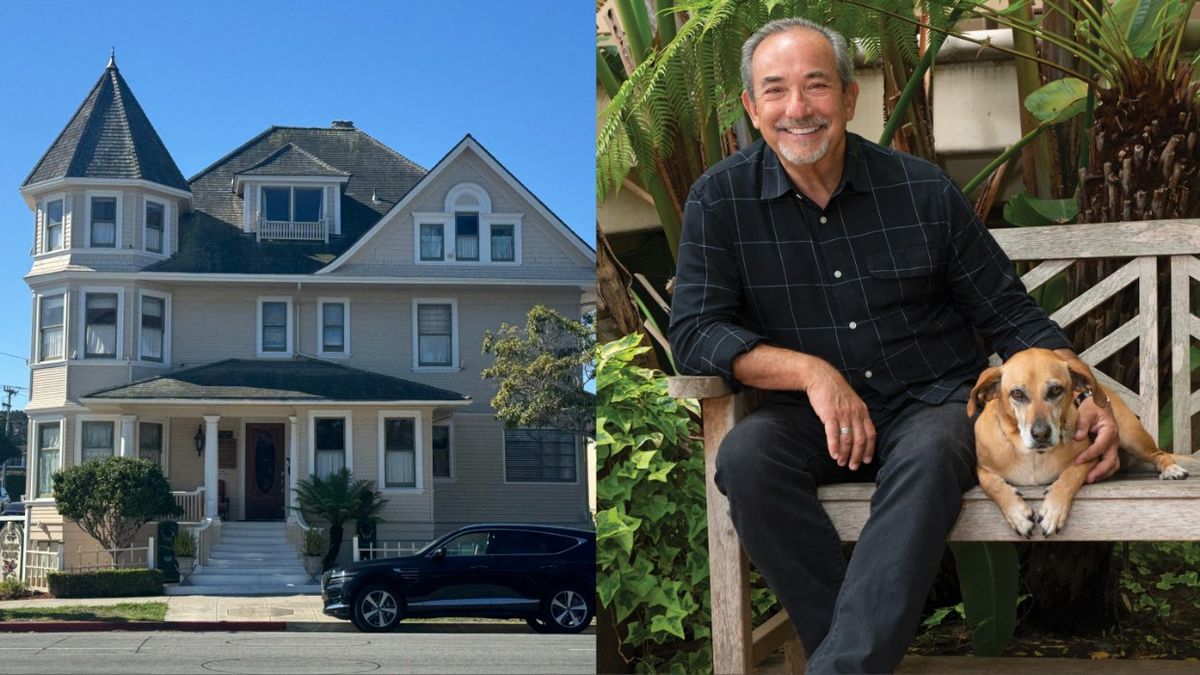





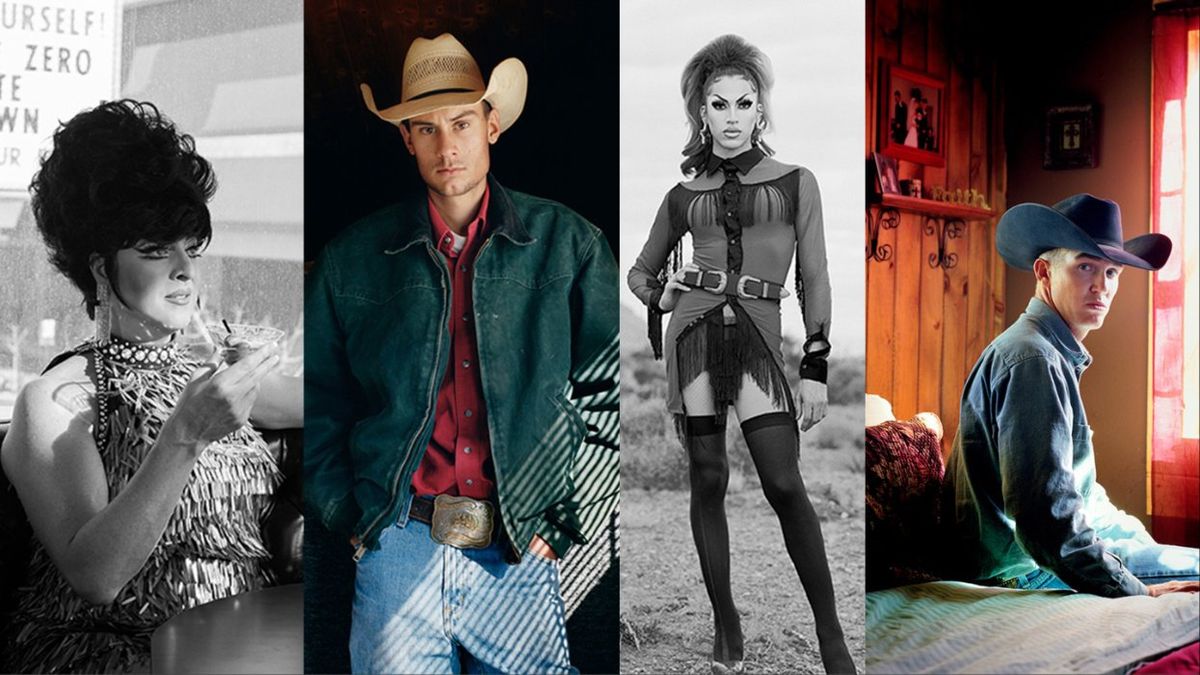




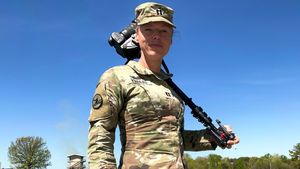


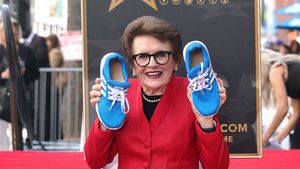


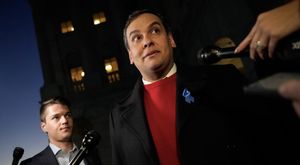



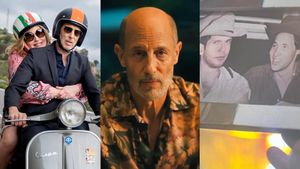




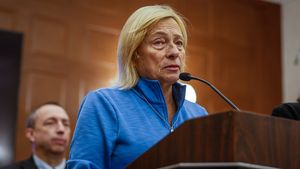

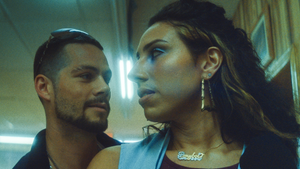



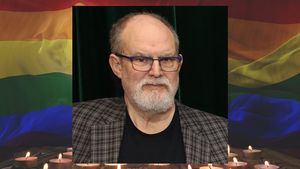









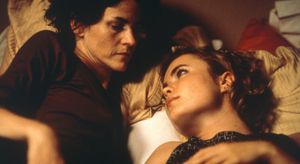

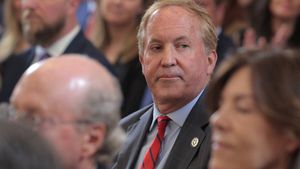







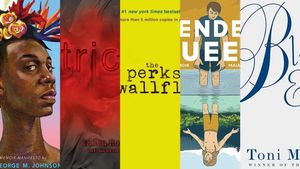


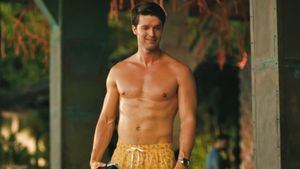


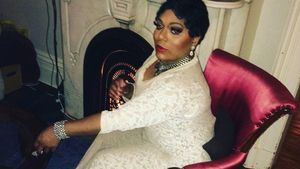
Exclusive: Lady Bunny releases new 'Hot To Blow' video